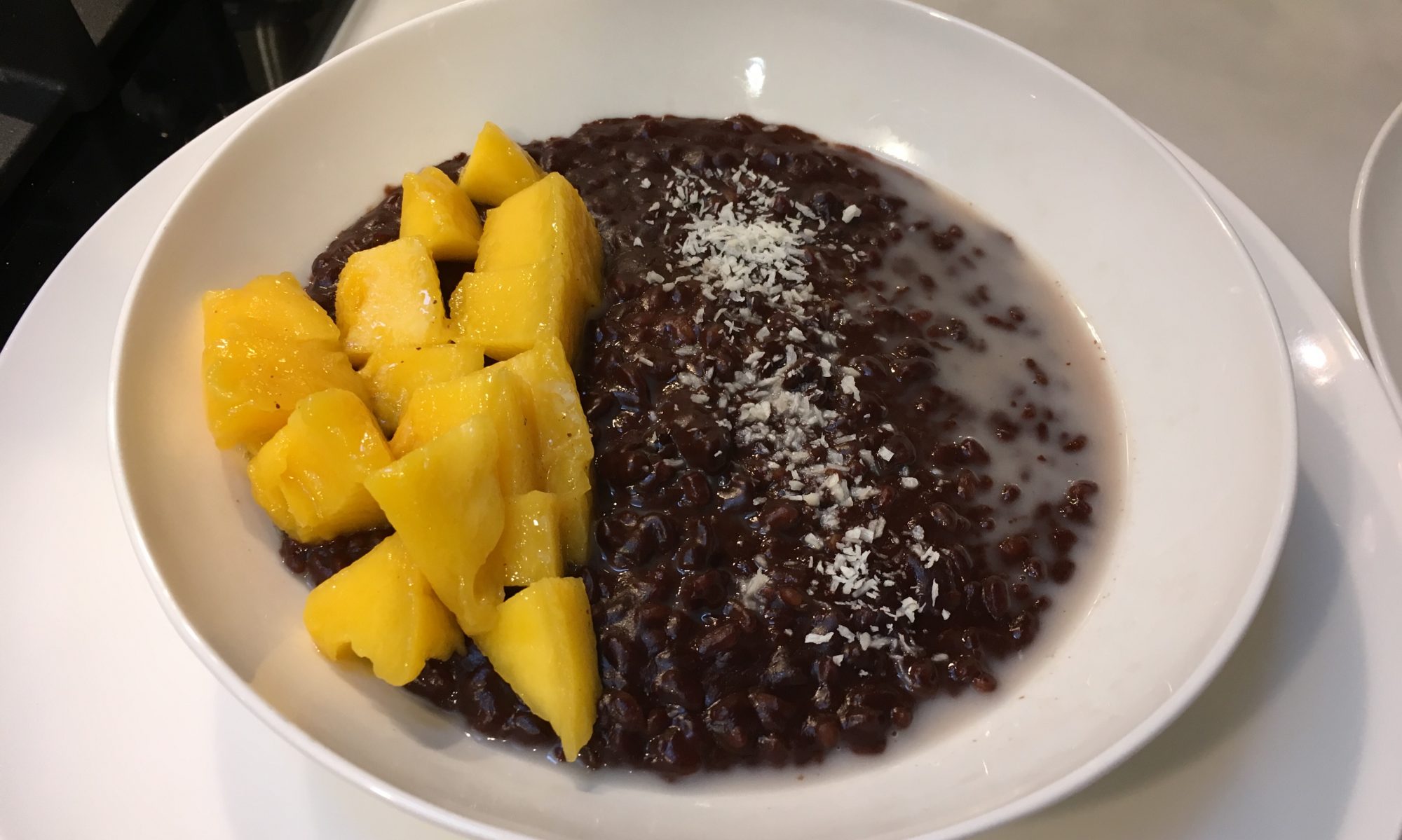I got a bunch of broad beans (the ones you have to pop out of their shells) in the veggie box delivery this week, but since the weather has turned a bit cooler, I didn’t want to make them into a salad. So I first used half of them in an omelette. What else could I use them for?
Well, clearly: a rice that combines various types of legumes—hence the ‘mixed’ in the title!
This recipe is loosely based on the recipe in “La cuina de la Serra de Mariola” book, but adapted to ingredients I could find here in London.

Ingredients (for 4 people)
- 1 big or 2 small onions
- half a can of tinned tomatoes (~200g)
- 2 garlic cloves
- olive oil
- paprika
- a parsnip, a carrot or any other root vegetable you can find (or both at once!!)
- some greens such as cabbage or spring/summer greens
- a bunch of fresh, tender broad beans (without shell)
- a bunch of lentils (puy or green small ones work well but anything will work)
- dried beans:
- a bunch of red kidney beans
- a bunch of smaller beans (like flageolet)
- 70 grams of bomba or round rice
- optional: some saffron or rice colouring (“colorante alimentario” for paella)
Preparation
Soak the dried beans with an abundance of water, preferably overnight, or at least a few hours before cooking this.
Drain them and place them in a deep pot with water. Bring to a boil and cook on a high heat for about 10 minutes, making sure nothing spills out (sometimes a foam can emerge and make a bit of a disaster in the kitchen!). Then reduce the heat and simmer until the beans are beginning to become tender.
In parallel, peel and roughly chop the onion and garlic cloves. Add some olive oil to a pan and bring it to a moderate-high heat. Fry the onion and garlic first on a higher heat for a couple minutes then reduce to medium-low, stirring regularly so it cooks evenly, until the onion starts to soften and brown. Then bring the pan to a high heat again, add the tomato, cook at high heat for about a minute, add some paprika to taste, stir and reduce the heat to minimum, letting it cook slowly while you prepare the other vegetables. Turn it off when it looks quite reduced and the tomato has deepened in colour.
Wash (maybe peel) the carrot or root vegetable. Cut in slices or small cubes, and set aside.

Shelled broad beans 
Shells of broad beans
Shell the beans if you haven’t done it yet and set aside.
Wash the green vegetables (cabbage or spring greens). If they have harder bits, like the center of the leaves, cut those separately and set them aside. Chop the green bits so there aren’t long strips of green (they can be cumbersome to “catch” with a spoon).
Now we will continue adding ingredients to the pot, each in turn as the last ingredient we added starts to feel tender, so that we add them in a “harder to softer” ingredient order:
- carrot
- lentils
- fresh beans
- hard bits of the green vegetables
- the rest of the green vegetables
- the rice (and optionally the saffron or colouring)
During this process, do…
stir often and gently: you don’t want to break and mash things. But equally you want things cooked evenly. Just apply a light touch!
keep topping the pot with dashes of hot water, as needed. You want this rice to feel just slightly less liquid than a soup, so keep an eye on the situation. This will also help you with stirring lightly (the drier the mix, the more force you’ll have to apply, as all the legumes give it a certain viscosity).
Notice that we’re adding the rice in the last step, so as to minimise the amount of stirring the rice… and of starch releasing!

Then we add the tomato, garlic and onion sauce that we prepared beforehand.
Stir to mix it all in, and adjust for salt.
Cook on a low heat for about 5-10 more minutes, so things come together. Let it rest for five minutes before serving.
TIP: This keeps quite well in a box in the fridge, so you could cook a big portion and have leftovers. The only detail is that the rice will keep absorbing water while it is in the box, so you might need to add some water when reheating.
Anecdata
My grandmother used to make soupy things like this, and not only during Lent, as she had bad teeth (the perks of growing up in deprived, postwar Spain), and thus she favoured softer food that didn’t involve a lot of chewing.
At the time, the idea of mixing lentils with other types of legumes or even with rice in the same pot absolutely horrified me—I might have been more of a purist back then!
Now I really enjoy the multiple textures!
This style of rice has become rare in households and restaurants as it involves a longer cooking time than other types of rices, but perhaps now that we aim to eat more sustainably and respectfully towards the environment, it might come back in vogue!


